P.s. 35 serves 230 students in grades 5-12.
The student:teacher ratio of 5:1 is lower than the New York state level of 11:1.
Minority enrollment is 90% of the student body (majority Black and Hispanic), which is higher than the New York state average of 60% (majority Hispanic and Black).
Quick Stats (2025)
- School Type: Special education school
- Grades: 5-12
- Enrollment: 230 students
- Student:Teacher Ratio: 5:1
- Minority Enrollment: 90%
- Source: National Center for Education Statistics (NCES), NY Dept. of Education
Top Rankings
P.s. 35 ranks among the top 20% of public schools in New York for:
Category
Attribute
Percent Eligible For Free Lunch
Community Size
Student Attention
School Overview
P.s. 35's student population of 230 students has declined by 20% over five school years.
The teacher population of 49 teachers has grown by 16% over five school years.
School Type
Grades Offered
Grades 5-12
(offers virtual instruction)
(offers virtual instruction)
Total Students
230 students

Gender %

Total Classroom Teachers
49 teachers
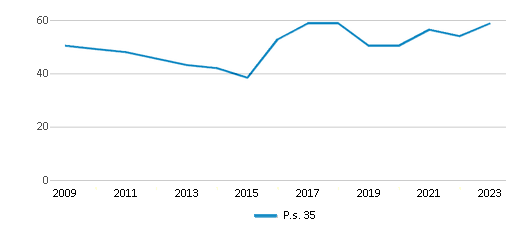
Students by Grade
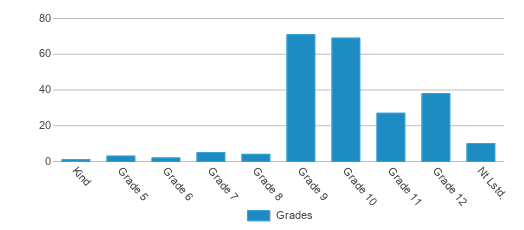
School Rankings
The diversity score of P.s. 35 is 0.67, which is less than the diversity score at state average of 0.72. The school's diversity has stayed relatively flat over five school years.
Student : Teacher Ratio
5:1
11:1
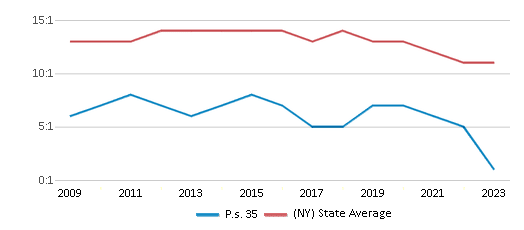
American Indian
2%
1%
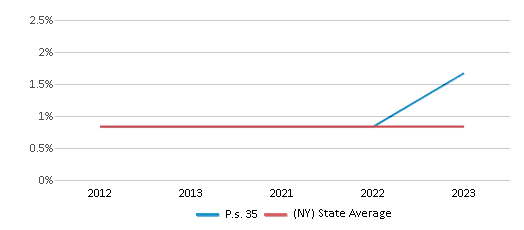
Asian
4%
10%
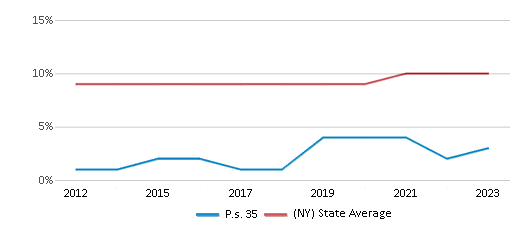
Hispanic
39%
30%
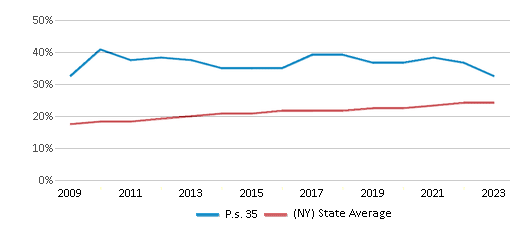
Black
41%
16%

White
10%
40%
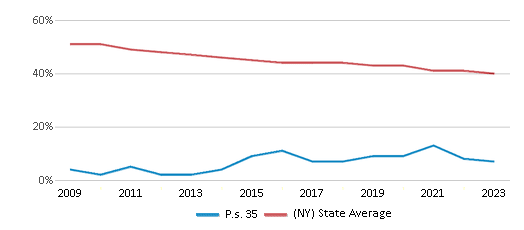
Hawaiian
2%
n/a
Two or more races
2%
3%
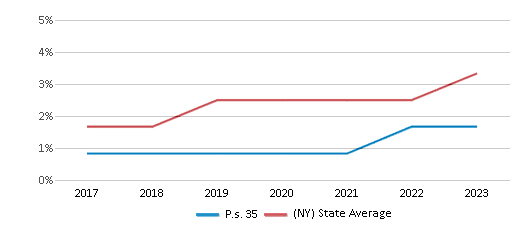
All Ethnic Groups
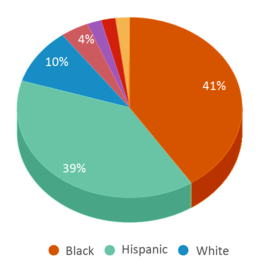


Participates in the National School Lunch Program (NSLP)
Yes
Eligible for Free Lunch
87%
54%
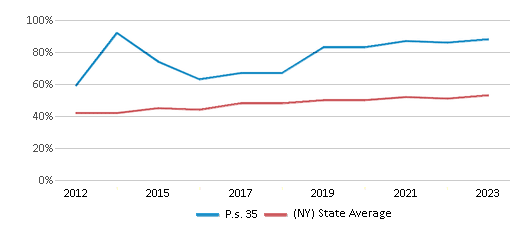
Eligible for Reduced Lunch (21-22)
1%
3%
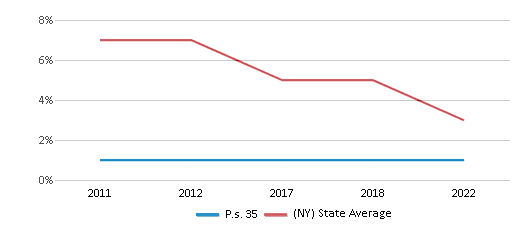
School Statewide Testing
School District Name
Source: National Center for Education Statistics (NCES), NY Dept. of Education
Profile last updated: 02/09/2025
Frequently Asked Questions
What schools are P.s. 35 often compared to?
P.s. 35is often viewed alongside schools like P.s. 94 by visitors of our site.
How many students attend P.s. 35?
230 students attend P.s. 35.
What is the racial composition of the student body?
41% of P.s. 35 students are Black, 39% of students are Hispanic, 10% of students are White, 4% of students are Asian, 2% of students are American Indian, 2% of students are Hawaiian, and 2% of students are Two or more races.
What is the student:teacher ratio of P.s. 35?
P.s. 35 has a student ration of 5:1, which is lower than the New York state average of 11:1.
What grades does P.s. 35 offer ?
P.s. 35 offers enrollment in grades 5-12 (offers virtual instruction).
What school district is P.s. 35 part of?
P.s. 35 is part of Nyc Special Schools - District 75 School District.
School Reviews
2 2/23/2009
I work on the same block. I constantly see their students loitering on the sidewalk, cursing (and sometimes fighting) and blocking foot traffic. Just today I saw students from the school in the chinese take out store around the corner, talking very loudly, cursing and spitting. The school's teachers who are also outside along with school safety officers don't seem to care at all.
Review P.s. 35. Reviews should be a few sentences in length. Please include any comments on:
- Quality of academic programs, teachers, and facilities
- Availability of music, art, sports and other extracurricular activities
Recent Articles

What Is A Charter School?
Explore the world of charter schools in this comprehensive guide. Learn about their history, how they operate, and the pros and cons of this educational innovation. Discover key facts about charter schools, including admission policies, demographics, and funding, as well as what to look for when considering a charter school for your child.

10 Reasons Why High School Sports Benefit Students
Discover the 10 compelling reasons why high school sports are beneficial for students. This comprehensive article explores how athletics enhance academic performance, foster personal growth, and develop crucial life skills. From improved fitness and time management to leadership development and community representation, learn why participating in high school sports can be a game-changer for students' overall success and well-being.

February 05, 2025
Understanding the U.S. Department of Education: Structure, Impact, and EvolutionWe explore how the Department of Education shapes American education, from its cabinet-level leadership to its impact on millions of students, written for general audiences seeking clarity on this vital institution.





